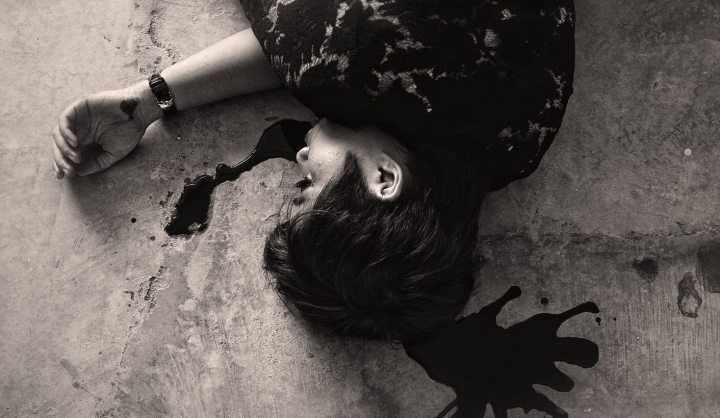Maverick Life, South Africa
Health-E: The Hidden Violence – women and attempted suicide

For hundreds of murdered South African women, the last face they see is a face they used to love. Almost 60 percent of women murdered annually may die by their partner’s hands – but who is counting the women who die by their own hands when violence at home becomes too much? GARRET BARNWELL reports for HEALTH-E NEWS.
Sandile* is admitted to hospital over the weekend and I meet her on her third day there. Draped in a hospital gown, she looks tired, standing outside my office with an almost empty drip hanging over her lap.
Hospital is tiring. Some patients struggle to get a full night’s rest in bustling wards, and the food’s not the best. Most of my patients’ hospital stays are also unplanned so they lack personal items such as deodorant or sanitary towels, or cellphones to call loved ones, although public hospitals provide some of the former in an attempt to make the stay more dignified.
Today, Sandile’s only companion is the ward nurse who accompanies her from the ward to my office. Before she enters, I screen the doctor’s referral letter. The paper bears a litany of words to describe a range of self-harming behaviours, among them “attempted suicide”.
Oxford University Professor Mark Williams has described suicide as a “cry of pain” – a deep and profound expression of pain rather than a cry for help.
Sandile is typical of a high proportion of the cases I see as a public sector psychologist: young women whose lives are often marked by unemployment or low-paying jobs. While suicide cuts across economic divides globally, socio-economic deprivation may increase one’s psychological vulnerability to attempt suicide.
And most of their stories share another facet: dangerous relationships. Some are violent but just as many are emotionally or economically abusive. All have elements of intimate partner violence.
A 2009 Medical Research Council study conducted among 930 female homicides found that intimate partner violence accounted for almost 60 percent of these deaths – five times the global average.
Wits Institute for Social and Economic Research honorary research associate Lisa Vetten has said figures such as these now make intimate partner violence the leading cause of female homicides in South Africa.
But no one is counting how many women like Sandile are also casualities of wars at home. We have very poor statistics about attempted suicide and even poorer data about underlying, motivating factors.
And we can’t address what we don’t understand.
When patients like Sandile are referred to public sector clinical psychologists, our main role is to assess the risk of patients harming themselves again. In South Africa, it is also critical to assess whether others are placing them in danger. Risk assessments are based on a patient’s history and what they report at the time.
Psychologists assess the patient’s psychological, physical and socio-economic stressors and their ability to cope with these after being discharged. The clinical psychologist’s goals are to ensure the patient is safe and mitigate the risk that the patient will attempt to end their life again, by identifying ways the health system can help.
We are able to offer psychotherapy to Sandile, and if she is lucky, in some districts we can refer her to support groups or a group that focuses on enhancing the person’s ability to cope with adverse conditions. However, our limited resources and long waiting lists across the country limit what we can do, and programmes targeting intimate partner violence are rare.
We refer patients to social workers and, in some communities, work with NGOs that offer support services, but even the most resourced districts fall short of addressing the current need, as there are no comprehensive services for people who experience intimate partner violence.
In reality, intimate partner violence requires a long-term, patient-centred investment. These cycles of violence aren’t broken in a day. If we are to address intimate partner violence in South Africa, more attention needs to be paid to how these cycles of violence interact with the public healthcare system. We need to gain a better epidemiological understanding of the prevalence of attempted suicide in South Africa and understand the driving factors.
When intimate partner violence is not dealt with effectively, we have missed an opportunity to intervene and we may not get another chance. Missed opportunities risk leaving patients exposed to intimate partner violence and increase the risk of eventual suicide.
Critical reflection is needed to determine whether the current configuration of healthcare services is adequately addressing the needs of people who have experienced intimate partner violence who are accessing services.
Attempted suicide may be a cry of pain but it may also present the health system with an opportunity to intervene, end a cycle and save a life. DM
* This is a fictionalised patient based on composite sketches of typical cases.
Garret Barnwell is a community service clinical psychologist and a member of the Rural Mental Health Campaign.
Photo by Aiena Zahira Daim via Flickr.



















 Become an Insider
Become an Insider